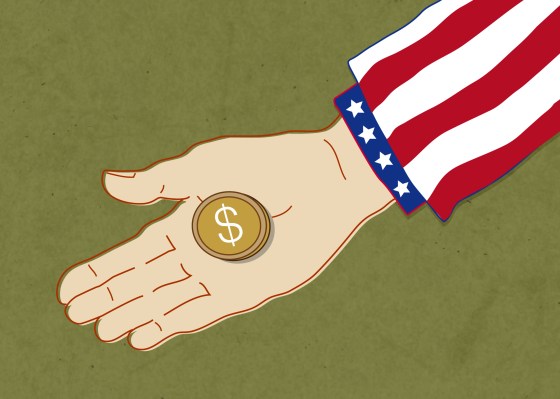Our team of researchers started CoCoPIE to solve the chip shortage crisis. We’re a group of Ph.D.s who aim to power next-generation technology without the need for expensive hardware that takes billions of dollars to develop and years to deploy. We needed a way to bring our idea into action.
For deep tech startups, the capital game can be a tricky one to play. The VC world is attracted to the low-investment/high-returns model deep tech tends to offer, but it can also be impatient with the time it takes to get there. According to PitchBook, the VC world is also trending toward the megadeal ($100 million+), which doesn’t generally apply to early-stage startups with a handful of employees.
While we did raise funds from one of the VC world’s glitterati — Sequoia Capital — when we were accepted into the Small Business Innovation Research/Small Business Technology Transfer (SBIR/STTR) program, we knew our solution was much more valuable than a chip that would make its way to the reject line.
Here’s why we applied for a federal grant and why we think you should add “America’s Seed Fund” to your deep tech fundraising mix.
Build credibility
There are several SBIR/STTR programs. Ours is powered by the National Science Foundation. These grants are highly competitive and, if chosen, can establish and strengthen your company’s technical image on the market.
Being selected out of thousands of U.S. applicants signals that your innovation has strong technical and commercial merit and the potential for broad U.S. economic impact. It’s a stamp that encourages other potential investors to raise their hands. Even if you aren’t selected, the feedback you receive from the review committee is invaluable.
Keep equity and decision-making authority
Receiving funding often means you have to give something back. That can be interest payments if you’ve taken a loan or equity if you’ve received VC funds. The SBIR/STTR programs allow you to retain full ownership of your company and IP. The administrators also aren’t interested in driving strategy — they believe in your vision and want to help you bring it to fruition. Their goal is to “invest in a better future for our shareholders: the American public.”
CoCoPIE’s vision is to enable real-time AI for off-the-shelf mobile devices. If adopted by the semiconductor, digital media and IoT industries, it can significantly improve the way we consume, learn and interact with our devices.
But, like any deep tech company, the question becomes how to get it widely adopted. We are using the SBIR/STTR funds to convert our technology into a minimum viable product, an essential step for us to reach a broader customer base. Thus far, our technology has attracted multiple key pilot customers, including Tencent, a global gaming giant that utilizes our super-resolution technology to enhance its customers’ gaming experience.
Potential for additional funding
The SBIR/STTR program is administered in three gated phases that progress your product toward commercialization. Each startup can receive up to $2 million in funding. What you don’t get in funding in Phase III you make up for in actual business, typically through government procurement contracts.
This shows continued support. The government is saying: “We believed in you enough to fund your future. Now, we’re hiring you.” CoCoPIE is currently in Phase 1, but we plan to apply for Phase II when we’re eligible.
Here are a few things we learned through our successful application process that might help you on your journey:
Be clear about how you will use Phase I money to fund innovation through R&D
Your product should represent an innovation, and the Phase I funds should be used to make strides toward that innovation.
The NSF SBIR/STTR administrators like to say: “It is a good sign if the R&D has never been attempted and/or successfully done before or is attempting to overcome significant technical hurdles.” Focus on new and specific research work.
Include partners to show viability
This could be a client who has already agreed to integrate your solution or an academic whose research focuses on your technology who can vouch for your product. These third parties go a long way in showing the government you’re ahead of the game when it comes to a market launch.
At CoCoPIE, we were fortunate to have both: Our co-founders are college professors (including myself) and we already had clients like Cognizant, Tencent and other publicly traded chip manufacturers on board.
Show how your solution positively impacts the U.S. economy
The NSF SBIR/STTR program prioritizes impact, market pull and scale. So, make sure you have a strong story — with supporting research — on your product’s broad possibilities. How is it a response to significant market demand? Is there potential for broad adoption and job creation? Is there an element of social good?
Our research uncovered a potential $1.06 trillion market against our target industries (demand). And, most immediately, the technology can also alleviate the chip shortage by adding a software layer to existing hardware (more demand). We highlighted these benefits in our application process.
The best news is applying for a federal grant doesn’t preclude you from simultaneously exploring other funding avenues. We went the VC route, too. What it does is diversify your fundraising mix and add a layer of credibility, which in the end helps you reach viability faster as a startup.
